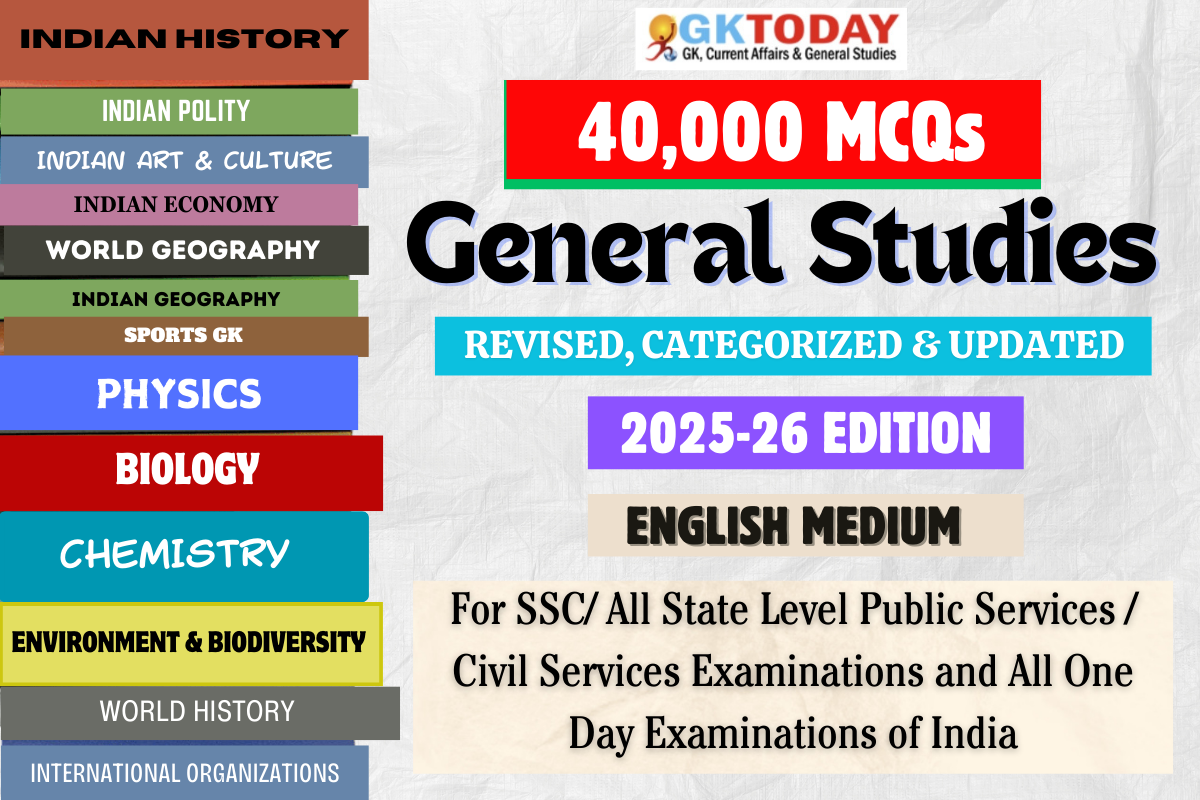Indian Geography MCQs
Indian Geography Multiple Choice Questions (MCQs) Quiz for State and UPSC Civil Services Examinations. Objective Questions on Indian Geography for competitive examinations.
1. Which among the following ports of India is also known as “child of partition”?
[A] Paradip
[B] Kolkata
[C] Kandla
[D] Haldia
Show Answer
Correct Answer: C [Kandla]
Notes:
The correct answer is Kandla. Kandla Port, located in Gujarat, was developed after the partition of India in 1947 to provide a major port for the western region, as the existing ports were in Pakistan. It was the first port in India to be developed as a “decongested” port, and it plays a crucial role in handling cargo for the northern and western states. The term “child of partition” reflects its establishment in response to the geopolitical changes following the partition.
2. Which is the only state in India producing muga silk ?
[A] Assam
[B] Bihar
[C] Orissa
[D] West Bengal
Show Answer
Correct Answer: A [Assam]
Notes:
The only state in India producing muga silk is Assam. Muga silk is a unique, golden silk known for its durability and natural sheen, and it is produced from the larvae of the Antheraea assamensis moth, which is native to Assam. This silk has been traditionally woven into garments like the Mekhela Chador and is integral to Assamese culture. Assam is also home to the Muga silk industry, which is protected by geographical indication (GI) status.
3. Garo & Khasi hills are a part of which of the following ranges?
[A] Satpura
[B] Vindhya
[C] Himalayas
[D] Eastern Ghat
Show Answer
Correct Answer: C [Himalayas]
Notes:
The Garo and Khasi hills are a part of Eastern Himalaya and are in northeastern India, located in the state of Meghalaya.
4. India’s first National Centre for Marine Bio-diversity (NCMB) is located in:
[A] Bhavnagar
[B] Jamnagar
[C] Mumbai
[D] Pondicherry
Show Answer
Correct Answer: B [Jamnagar]
Notes:
India’s first National Centre for Marine Bio-diversity is situated in Jamnagar. It was inaugurated in 2011. The project was completed by a P-P-P model with Reliance Industry.
5. The Tungabhadra multipurpose project, a joint venture between Karnataka and Andhra Pradesh, stands along which river that serves as a tributary to?
[A] Krishna
[B] Cauvery
[C] Godavari
[D] Sabarmati
Show Answer
Correct Answer: A [Krishna]
Notes:
The Tungabhadra River is a significant tributary of the Krishna River. This river is created through the convergence of the Tunga and Bhadra Rivers, which both have their sources at Gangamula, located in the Chikmagalur district of Karnataka. The Tungabhadra is considered the most voluminous tributary feeding into the Krishna River.
6. Which of the following state is not the beneficiary of Narmada River water sharing as per Tribunal constituted?
[A] Rajasthan
[B] Maharashtra
[C] Gujarat
[D] Chhatishgarh
Show Answer
Correct Answer: D [Chhatishgarh]
Notes:
Chhattisgarh is not a beneficiary of the Narmada River water sharing as per the Narmada Water Disputes Tribunal. The tribunal, established in 1969, allocated water primarily among Gujarat, Maharashtra, and Rajasthan. Chhattisgarh, formed in 2000 from Madhya Pradesh, does not have direct entitlements from the Narmada, which flows primarily through Gujarat and Madhya Pradesh.
7. The major cause for increase in agricultural production in India in past decade is:
[A] Increase in agricultural land holding
[B] Conversion of barren land to farm land by planting trees
[C] Improvement in agricultural technology
[D] Large scale use of mixed farming and organic farming
Show Answer
Correct Answer: C [ Improvement in agricultural technology]
Notes:
Third option is the correct answer
The major cause for increase in agricultural production in India in past decade is increase in irrigation facilities, especially in south India.
8. Identify the state with the help of given information:
- The northern part of the state is a semi-arid region
- The central part of the state is known for cultivation of cotton
- Cultivation of cash crops is predominant over food crops in this state
Select the correct answer from options given below:
[A] Gujarat
[B] Andhra Pradesh
[C] Madhya Pradesh
[D] Punjab
Show Answer
Correct Answer: A [Gujarat]
Notes:
All given features are of Gujarat state.
9. Rajghat River Valley Project is associated to which river?
[A] Yamuna
[B] Chambal
[C] Betwa
[D] Son
Show Answer
Correct Answer: C [ Betwa]
Notes:
Rajghat Dam is an Inter-state Dam project of the Government of Madhya Pradesh and Uttar Pradesh being constructed on Betwa River about 14 km from Historical place Chanderi in Madhya Pradesh.
10. Which river is located in Kolkata (Calcutta)?
[A] Adyar, Cooum
[B] Sabarmati
[C] Hooghly
[D] Godavari
Show Answer
Correct Answer: C [Hooghly]
Notes:
Hooghly district is one of the districts of the state of West Bengal in India. It can alternatively be spelt Hoogli or Hugli. The district is named after the Hooghly River.

